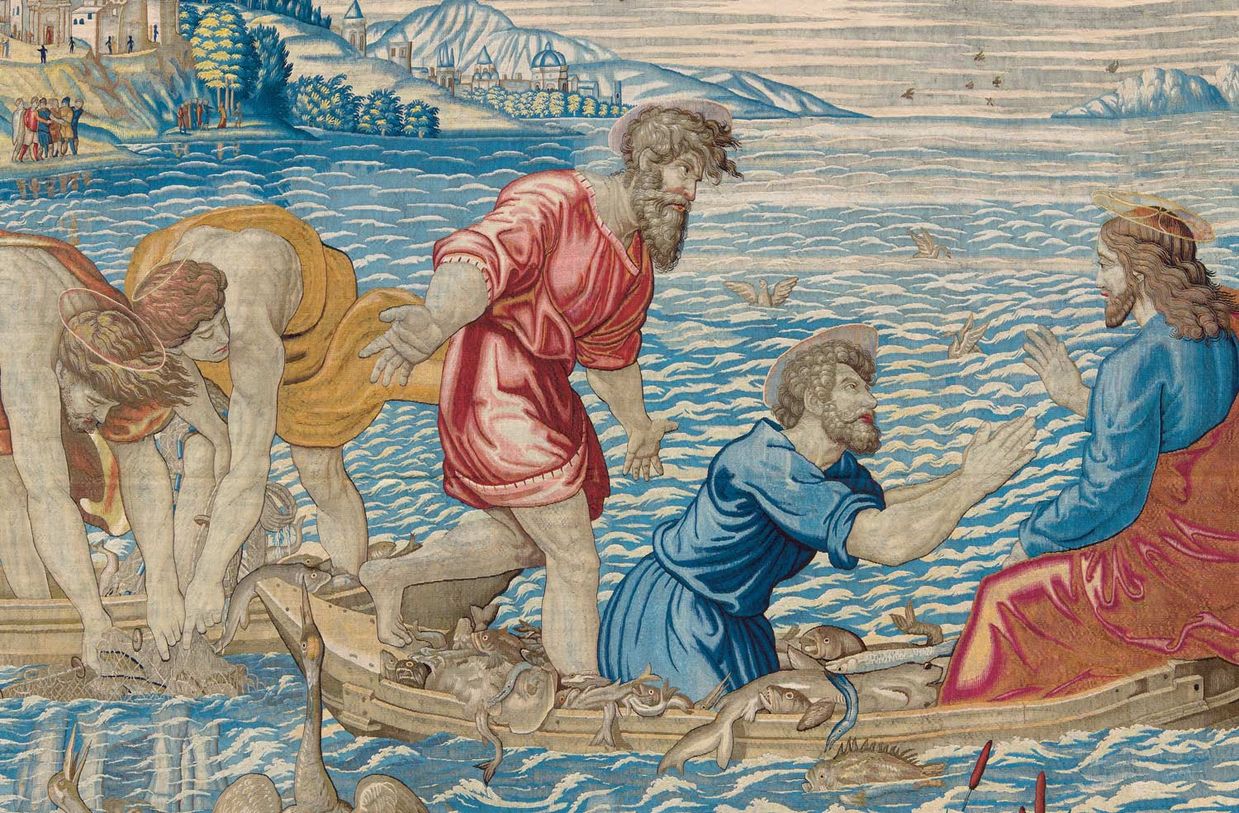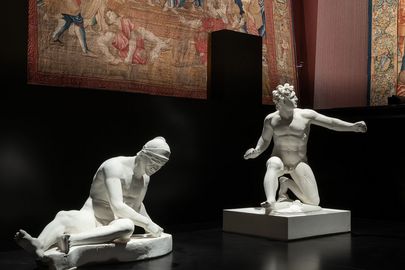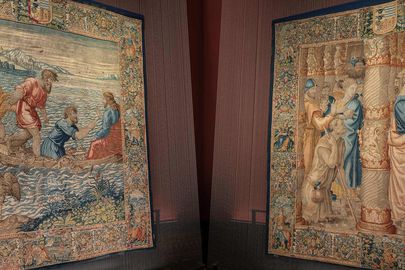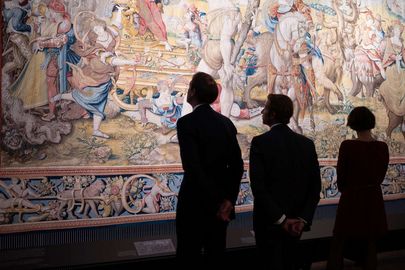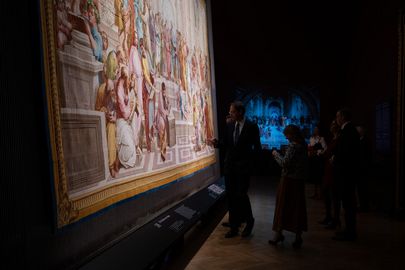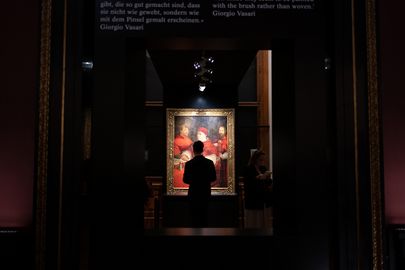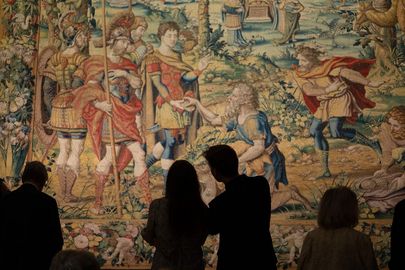The Fascinating
World of Tapestries
The large autumn exhibition at Kunsthistorisches Museum Vienna is devoted to tapestries.
The momentous painter Raffaello Sanzio da Urbino, called Raphael (1483–1520), was commissioned by Pope Leo X. to create the famous series depicting the life and acts of the apostles St Peter and St Paul for the Sistine Chapel in Rome. His designs set Flemish tapestry art on a new course.
learn more
The fascinating highlights of the show include unique Renaissance works in ‘gold & silk’ as well as tapestries depicting the seven deadly sins after designs by the renowned tapestry designer Pieter Coecke van Aelst (1502–1550) and more.
Book your ticket for Raffael. Gold & Silk now and find inspiration in the beauty of these masterpieces and the artistic legacy of the Renaissance.
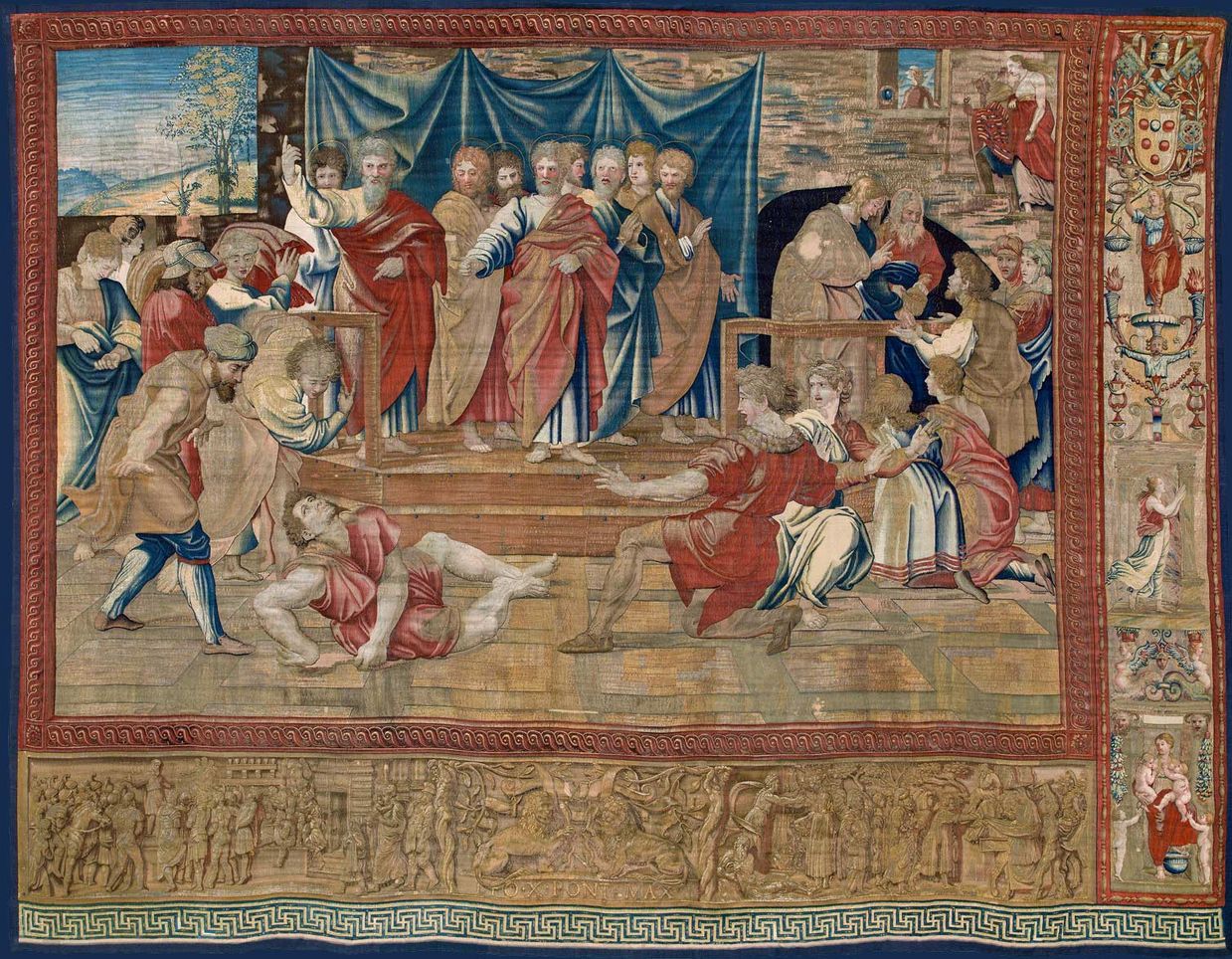
The Death of Ananias (editio princeps)
Series title: Depictions from the Lives and Acts of the Apostles Peter and Paul
Design: Raffaello Sanzio da Urbino (Urbino 1483–1520 Rome) and workshop, c.1515/16
Woven under the direction of Pieter van Aelst, Brussels, before 1521
Wool, silk, precious-metal-wrapped threads; H. 488 cm, W. 631 cm
Vatican City, Musei Vaticani, inv. no. 43870
Tapestries for Pope Leo X.
Brussels became the heartland of tapestry production during the sixteenth century. An independent Netherlandish-Flemish style had established itself in the city.
Tapestry
The word tapestry is derived from the Greek τάπης and the Latin tapetum (carpet, rug, wall hanging, wallpaper).
learn more
Tapestries are produced by stretching warp yarns into a loom and then inserting coloured weft yarns at a right angle. They are only inserted in those areas where they are required according to a model for the pattern. The weaving supports itself: once the warps and wefts have been combined according to the pattern they form a firm woven textile.
The art-loving Medici pope Leo X (1475–1521) provided a significant impetus to the evolution of this genre with one of his commissions.
In 1515, he entrusted the Italian painter Raphael (1483–1520) with the task of designing a series of ten tapestries featuring depictions of the lives and acts of the apostles Peter and Paul.
learn more
They were intended to elaborate on and decorate the lower wall area of the Sistine chapel in the Vatican Palace in Rome, but were produced in Brussels.
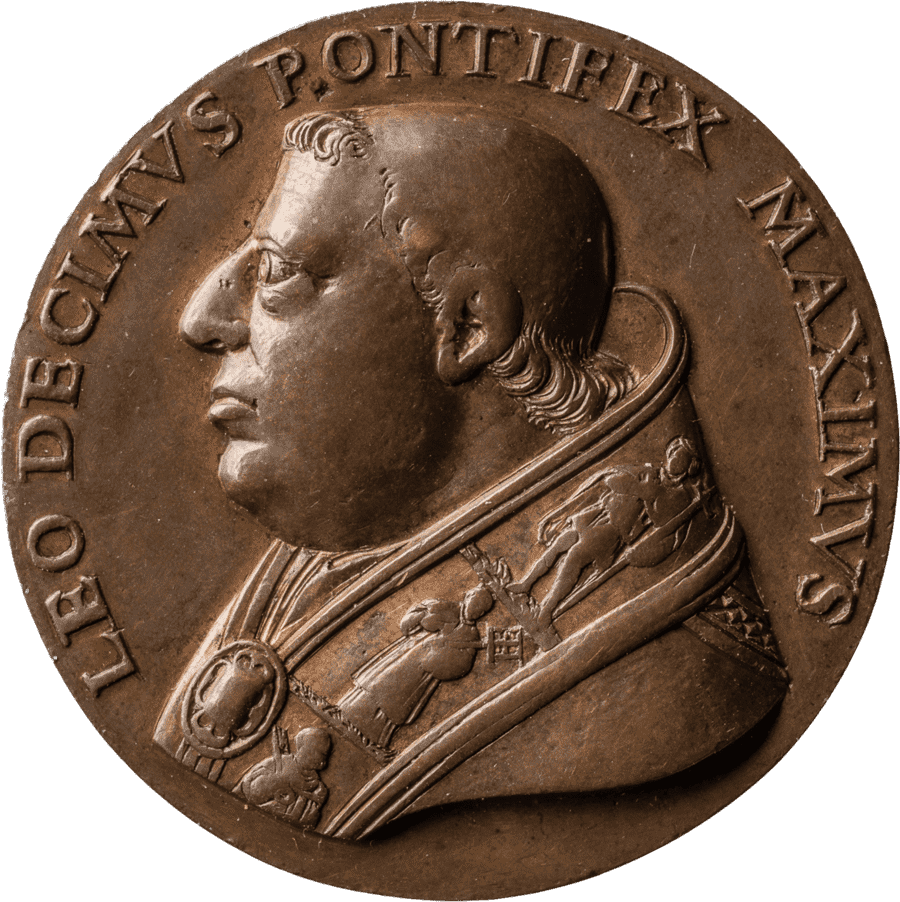
Pope Leo X (Giovanni de’ Medici, r. 1513–1521)
Reverse: Pax, Iustitia, and Abundantia
From 1521
Bronze (cast)
Kunsthistorisches Museum Vienna, Coin Cabinet, inv. no. 5071bβ
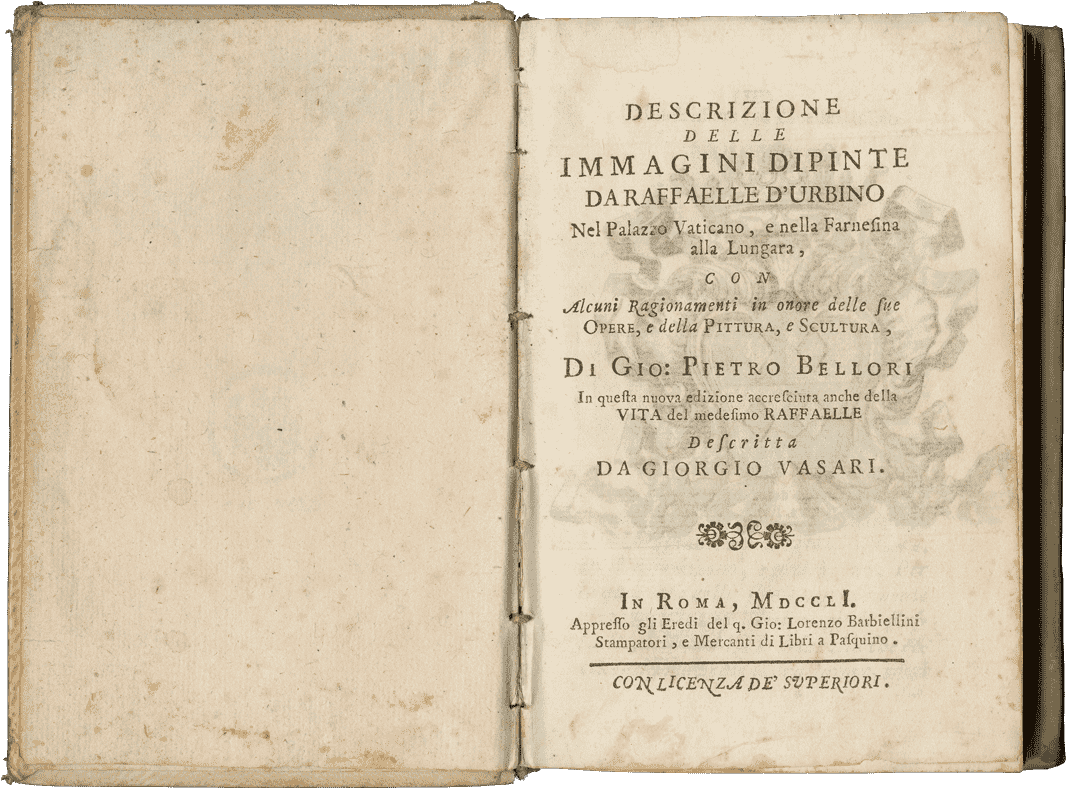
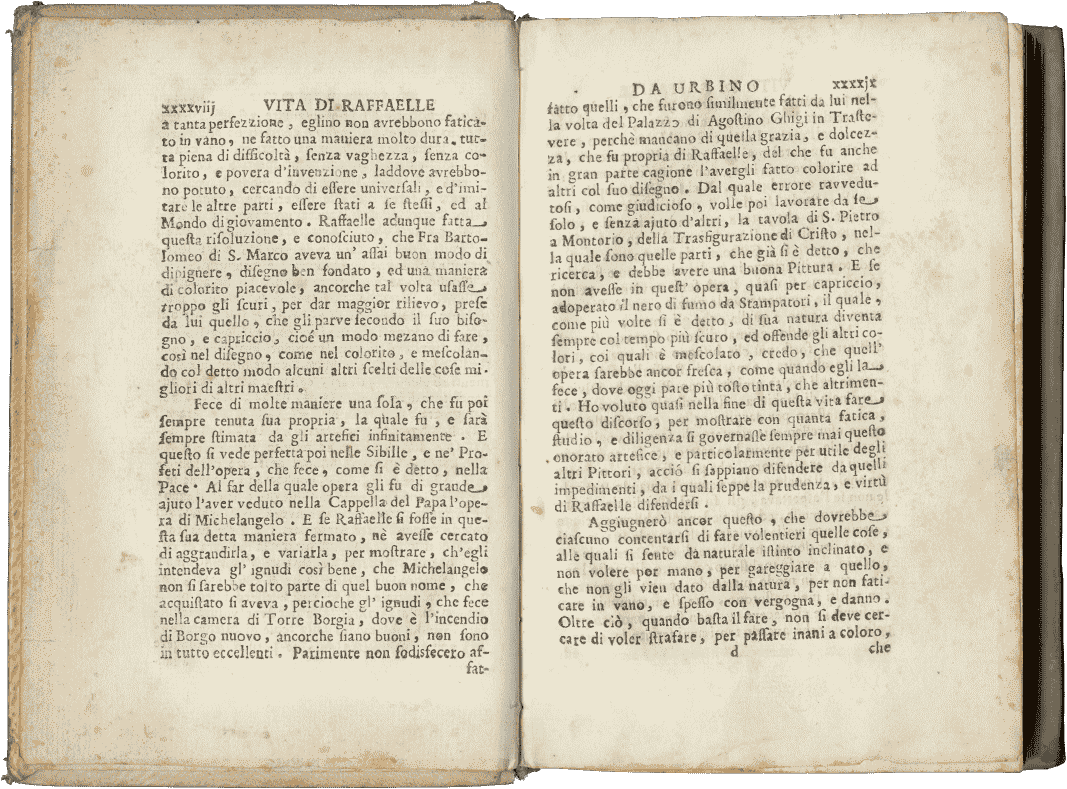
Descrizione delle immagini dipinte da Raffaelle d’Urbino nel Palazzo Vaticano, e nella Farnesina alla Lungara
Giovanni Pietro Bellori (Rome 1613–1696 Rome)
With a description of the life of Raphael by Giorgio Vasari
Rome, 1751; H. 15,9 cm, W. 10,5 cm
Kunsthistorisches Museum Vienna, Library, inv. no. 110.912
Giorgio Vasari:
artist and biographer
Giorgio Vasari (1511–1574) was an Italian artist and biographer. His Vitae of numerous Italian painters, sculptors, and architects first appeared in print in 1550 and bore his dedication to Cosimo I de’ Medici; it is considered his main work. Vasari has provided us with important information about the life of Raphael as well as comments on his works:
learn more
‘This project [meaning the Acts of the Apostles tapestries] was so miraculously executed that it makes anyone who sees it marvel to think that it was possible to have woven the hair and beards and to have given such softness to the flesh with a thread; this was certainly more the result of a miracle than of human artifice, for in these tapestries there are bodies of water, animals, and buildings that are so well made they seem to be painted with the brush rather than woven.’
Giorgio Vasari (1511–1574)
The Path to the
Final Tapestry Design
Raphael appears to have begun his work on the Acts of the Apostles with the design of the Miraculous Draught of Fishes.
Several drawings document the evolution of the composition, which underwent some fundamental alterations: the draught of fishes was originally placed into the background, but the artist eventually moved this theme into the foreground of the image. St Peter is kneeling down before Christ in appreciation of the rich haul of fish; behind him, Andrew is responding to the miracle with a sweeping gesture.
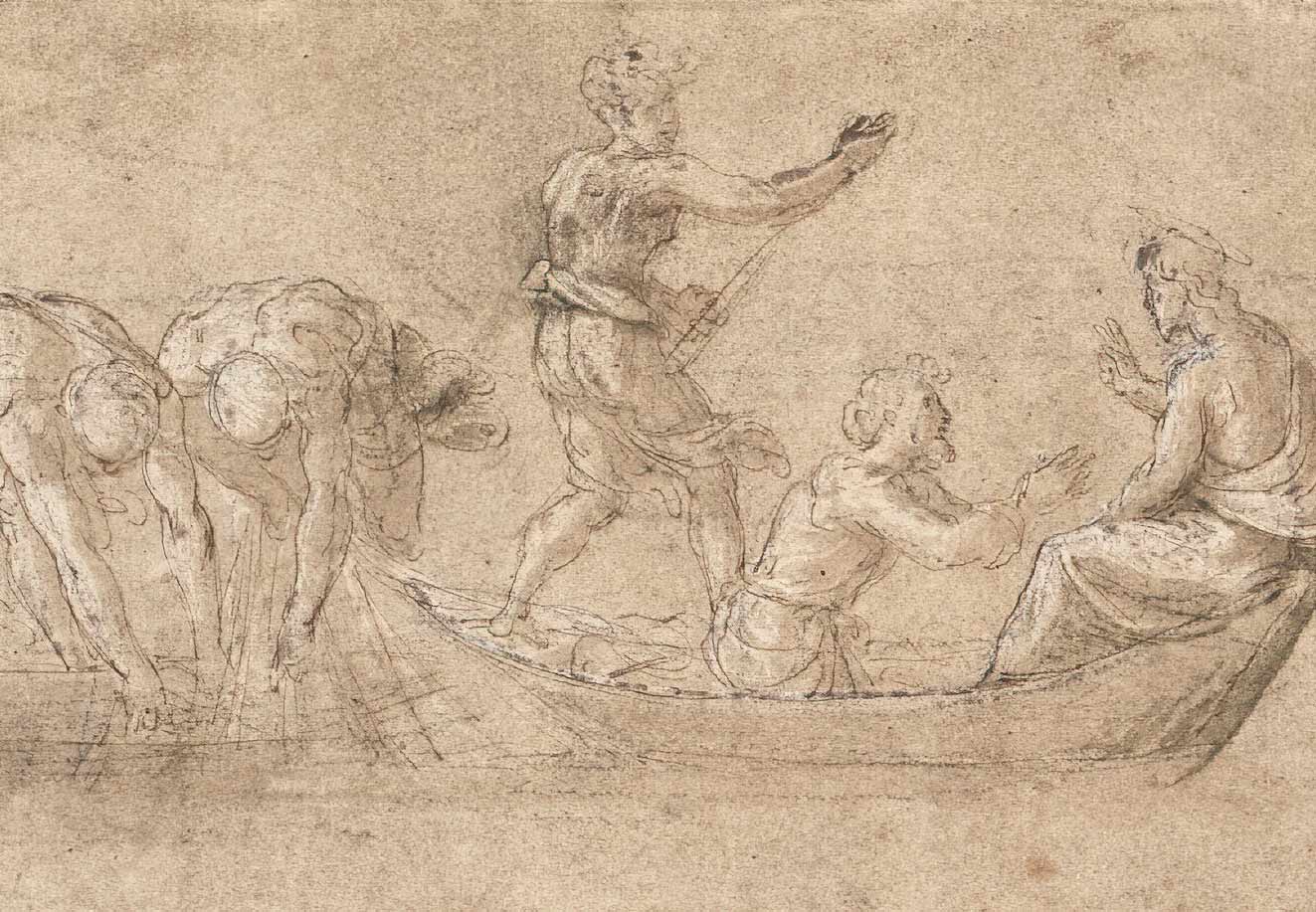
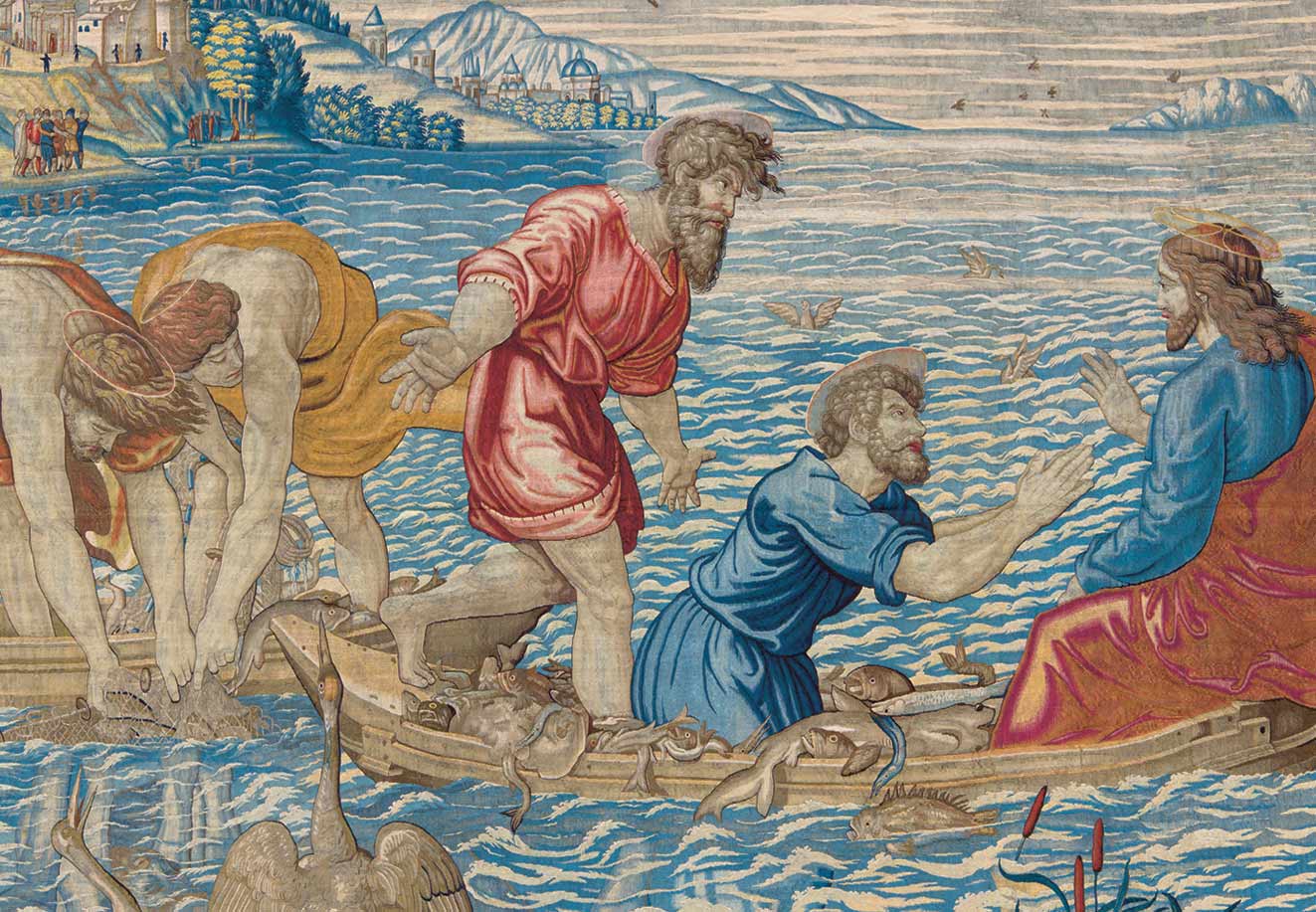


The Miraculous Draught of Fishes with Crowd of People in Foreground
Raffaello Sanzio da Urbino (Urbino 1483–1520 Rome)
c.1515
Pen and brown ink over black pencil drawing, brown wash, white heightening; H. 22,9 cm, W. 32,7 cm
Vienna, Albertina, inv. no. 192r
The Miraculous Draught of Fishes
Series title: Scenes from the Acts of the Apostles
Design: Raffaello Sanzio da Urbino (Urbino 1483–1520 Rome) and workshop, c.1515/16
Woven under the direction of Jakob I Geubels (d. before 1605), Brussels, c.1600
Unidentified coat of arms in the top border
Wool, silk; H. 413 cm, W. 408 cm
Vienna, Kunsthistorisches Museum, Kunstkammer, inv. no. T CIII/1
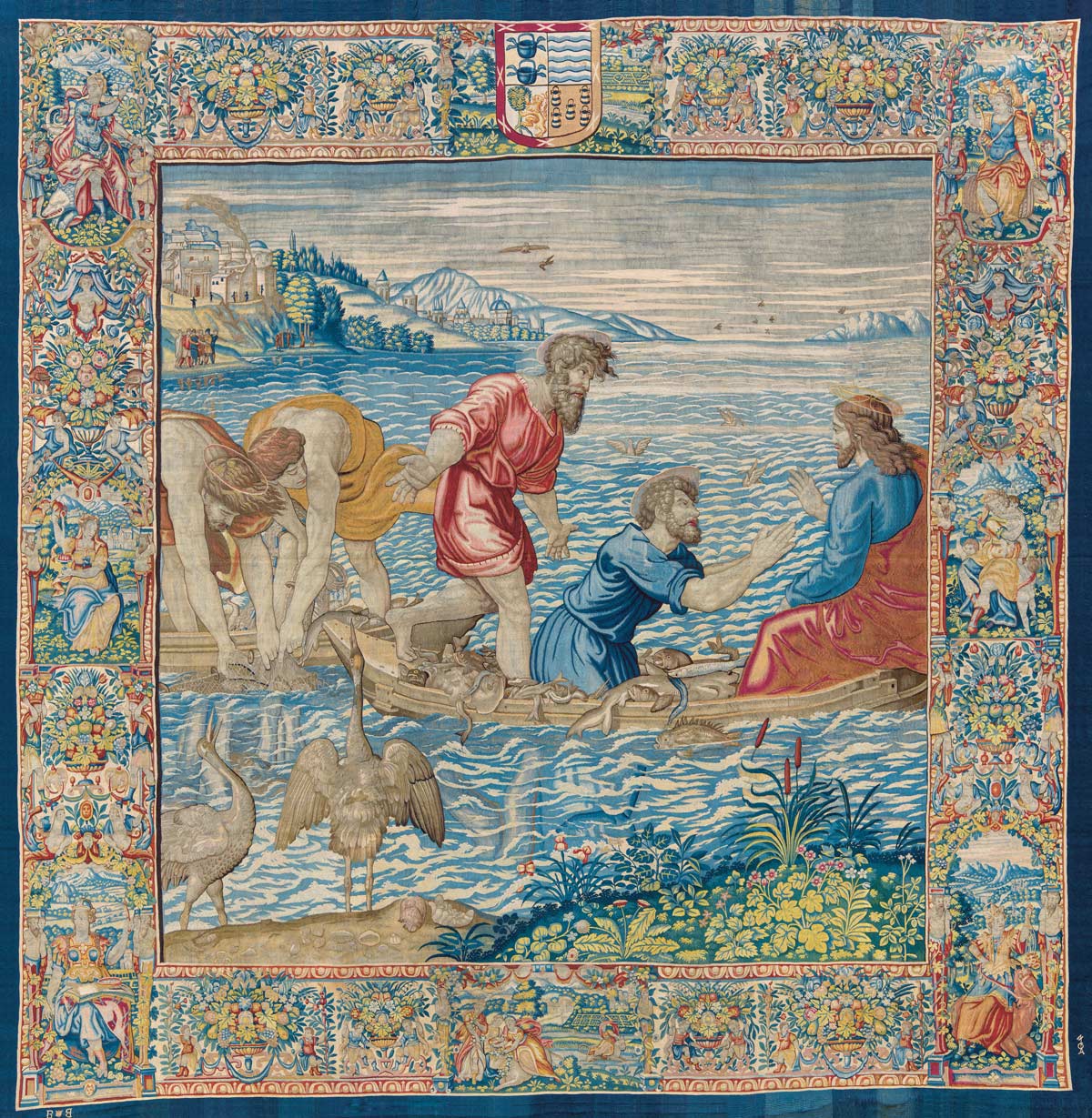
The Miraculous Draught of Fishes
Series title: Scenes from the Acts of the Apostles
Design: Raffaello Sanzio da Urbino (Urbino 1483–1520 Rome) and workshop, c.1515/16
Woven under the direction of Jakob I Geubels (d. before 1605), Brussels, c.1600
Unidentified coat of arms in the top border
Wool, silk; H. 413 cm, W. 408 cm
Vienna, Kunsthistorisches Museum, Kunstkammer, inv. no. T CIII/1
One of the Most Successful
Tapestry Series
No tapestry series has been replicated as frequently as the Acts of the Apostles following designs by Raphael. Almost fifty editions were created over the course of the centuries in Flemish, English, and French factories.
learn more
These include tapestries preserved in Vienna which have been woven in Brussels around 1600. They were based on copies of the Raphael cartoons in partly reduced versions.
Cartoon
The process of tapestry production entails three stages.
learn more
The first stage was for an artist to make a design (petit patron). This was then translated into a full-scale cartoon (grand patron) by one or more specialists. The cartoons subsequently served the weavers as a basis for their work; the weavers’ skill had a defining influence on the appearance and quality of the wall hanging.
Workshop member
Giovanni da Udine
The artists of Raphael’s workshop made some highly independent contributions to the development and elaboration of the designs and cartoons for the Acts of the Apostles.
learn more
This sheet with cranes and eagles is attributed to Giovanni da Udine; it is a preliminary study for the birds in the foreground of The Miraculous Draught of Fishes. Raphael greatly appreciated this artist not least for his animal depictions made from nature.
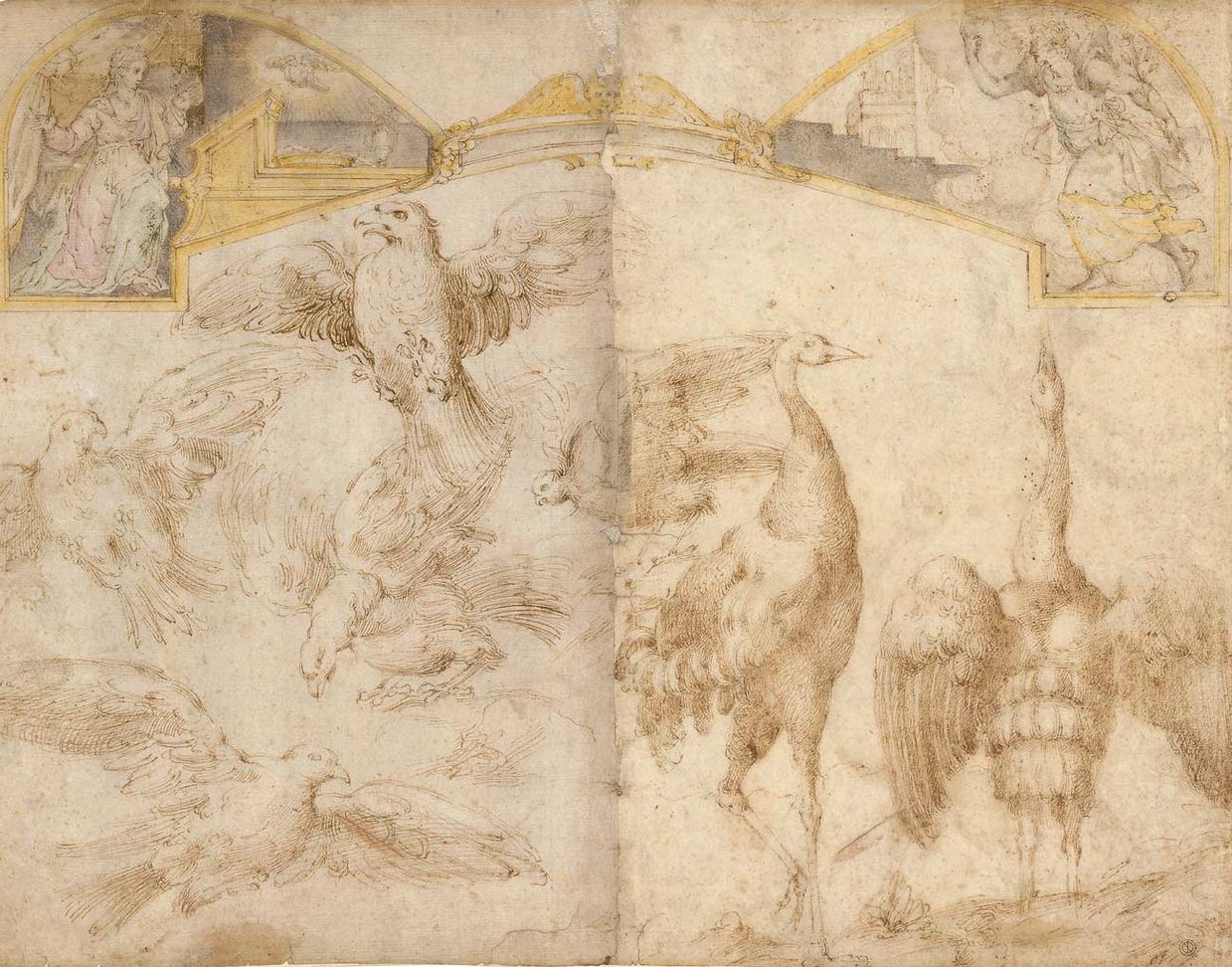
Sheet of studies with cranes and eagles as well as a proclamation scene
Giovanni da Udine (1487–1564), attributed
c.1515
Pen, ink, watercolour, underdrawing in black chalk
Vienna, Albertina, inv. no. 48641r
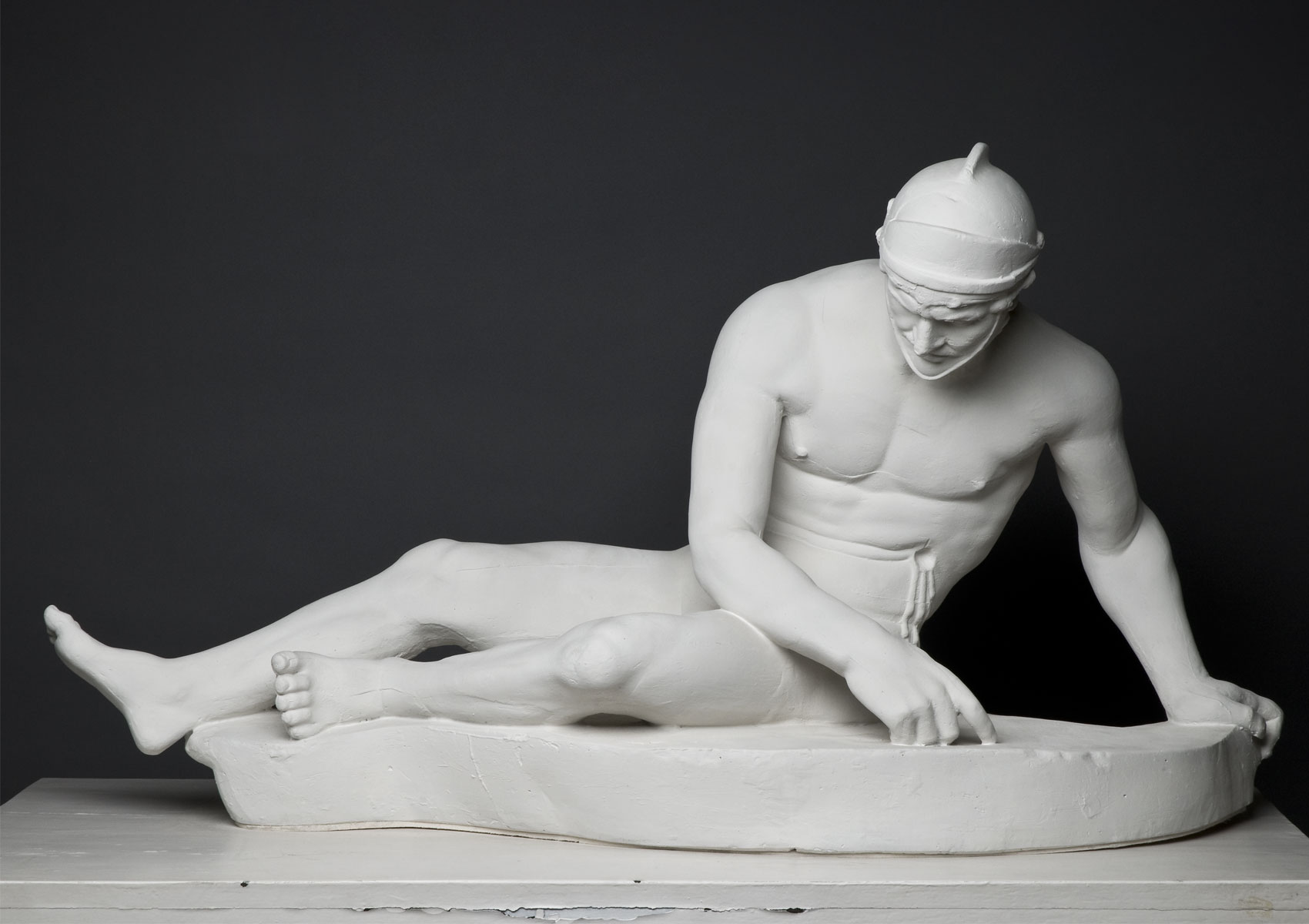
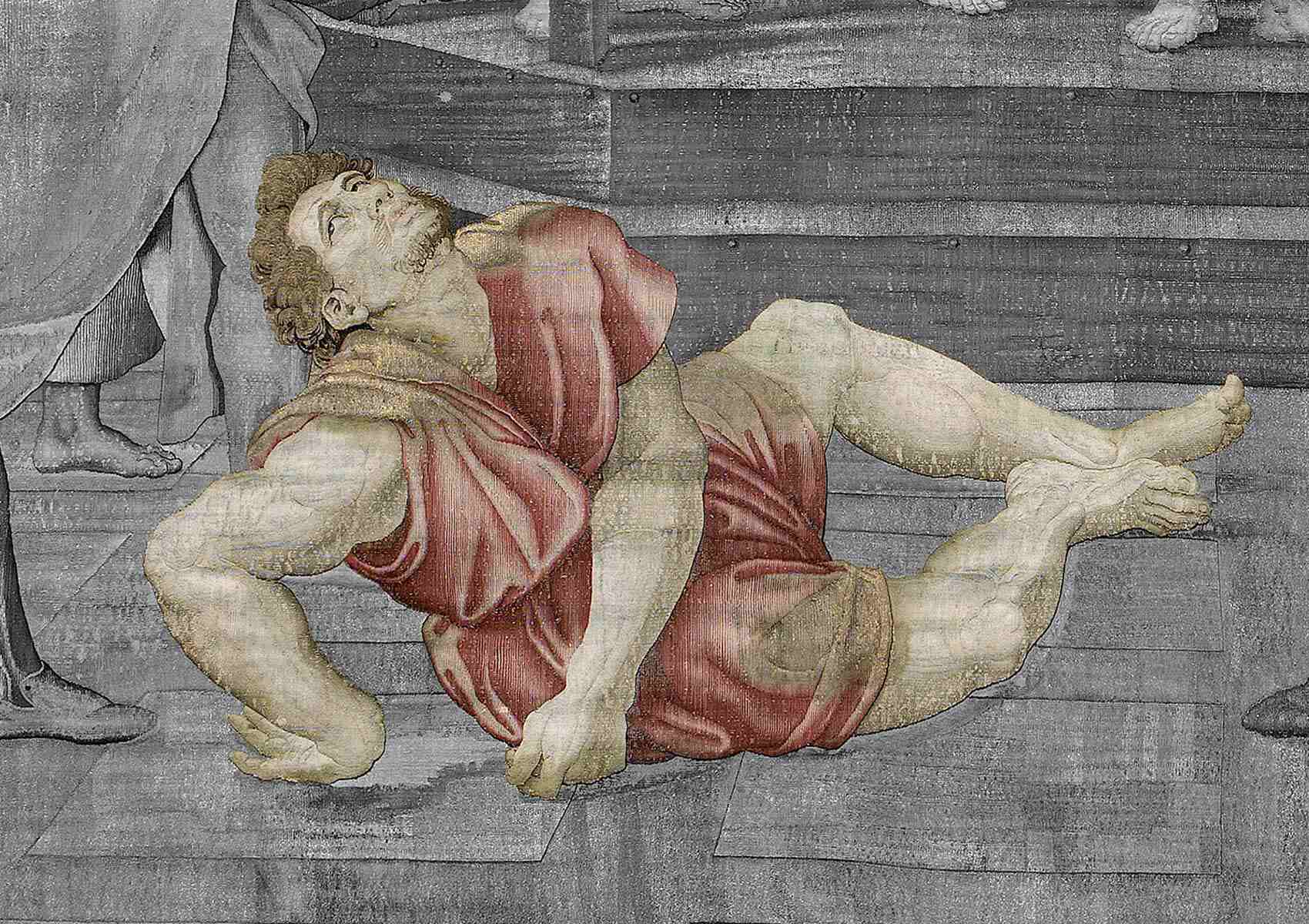
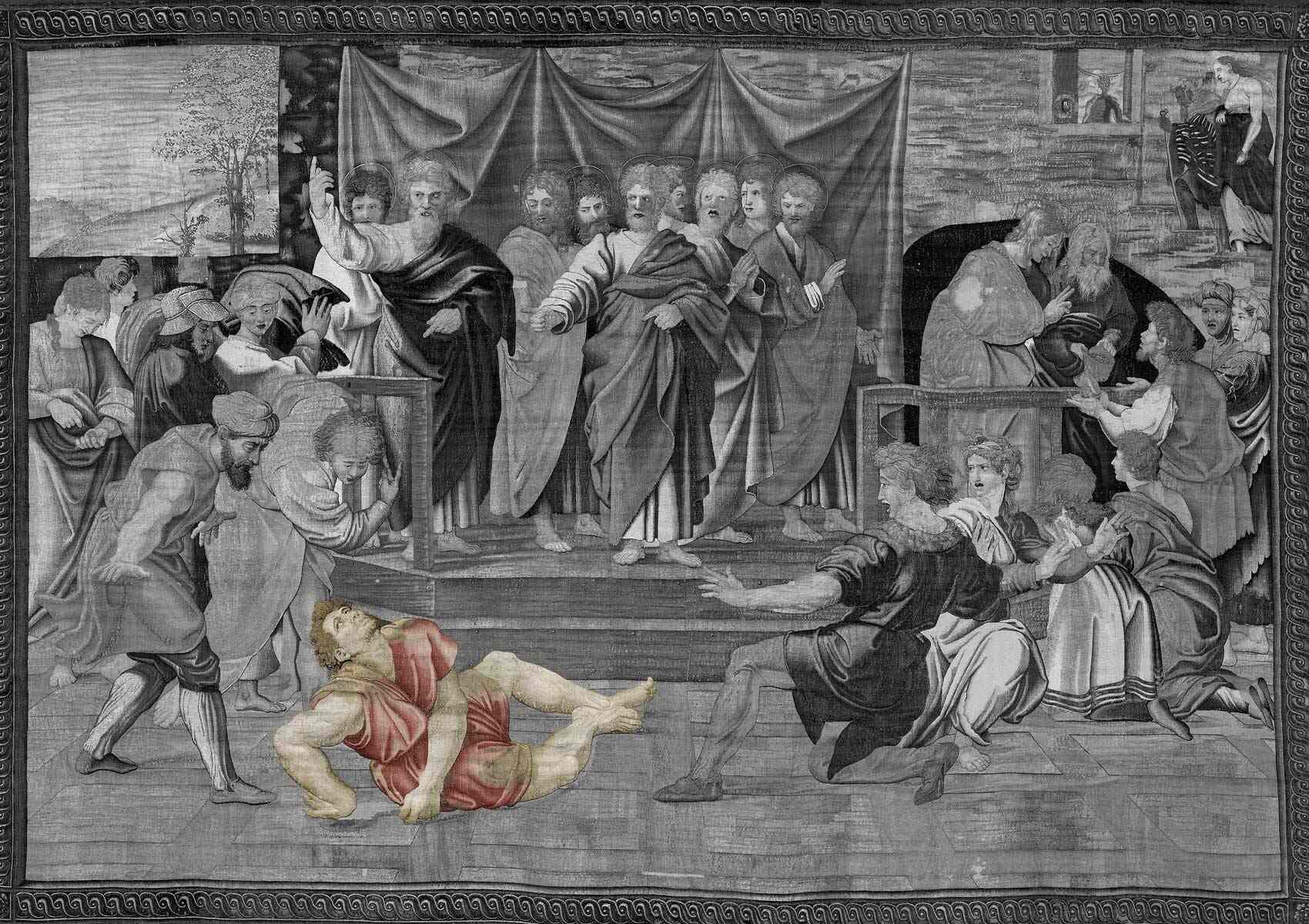
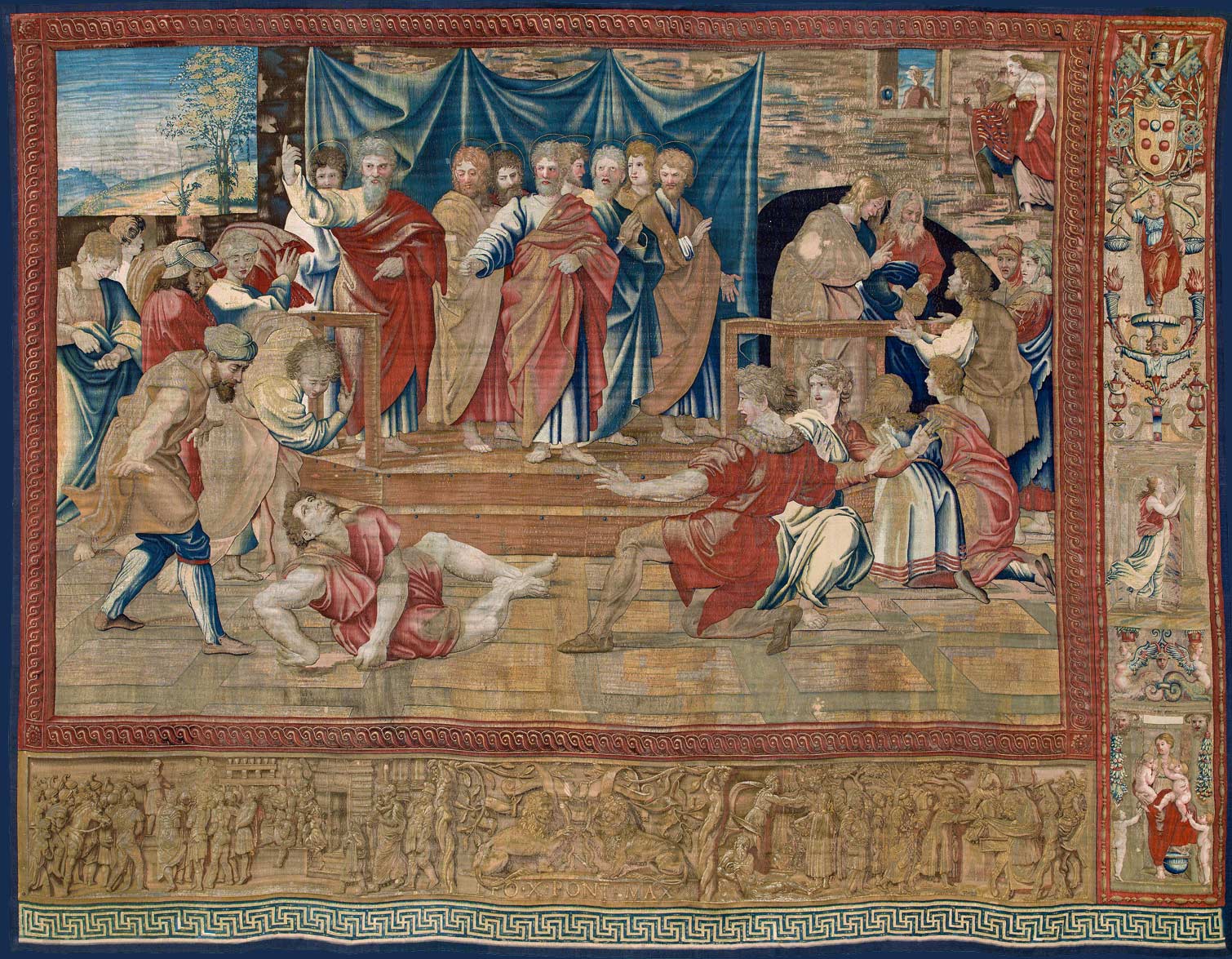




Reception of Antiquity
Raphael was deeply impressed by the 1514 discovery of several marble sculptures of what is known as the Small Pergamene Offering near the ancient Campus Martius in Rome. They can be based on Greek-Hellenistic bronze sculptures. The artist cites the sweeping poses of the two sculptures from this group of figures (shown here as copies) in his tapestry The Death of Ananias.
Dead Warrior from the so-called Small Pergamene Votive Offering
19th century
After a marble sculpture from the 2nd century CE, after a Hellenistic original
Plaster
University of Göttingen, Institute of Archaeology and Collection of Plaster Casts, inv. no. A 440
The Death of Ananias (editio princeps)
Series title: Depictions from the Lives and Acts of the Apostles Peter and Paul
Design: Raffaello Sanzio da Urbino (Urbino 1483–1520 Rome) and workshop, c.1515/16
Woven under the direction of Pieter van Aelst, Brussels, before 1521
Wool, silk, precious-metal-wrapped threads; H. 488 cm, W. 631 cm
Vatican City, Musei Vaticani, inv. no. 43870
Raphael as Inspiration
Flemish Tapestry during the First Half of the Sixteenth Century
The hallmarks of Raphael’s Acts of the Apostles would go on to have a lasting influence on the artists working in tapestry design in Flanders – first and foremost Barend van Orley (1488–1541). Van Orley had been involved in spectacular tapestry projects early on in his career.
His most important successors include Pieter Coecke van Aelst (1502–1550) and Michiel Coxcie (c.1499–1592), who picked up on the innovations introduced by Raphael and van Orley with great confidence.
Coecke van Aelst was responsible for some of the impressive tapestries at the Kunsthistorisches Museum.
learn more
These include a series depicting the seven deadly sins, which provides a striking narrative of the consequences of the sins at hand of heroic figures following Raphael’s example. The protagonists are featured within a triumphal procession that is situated in a landscape with convincing perspective
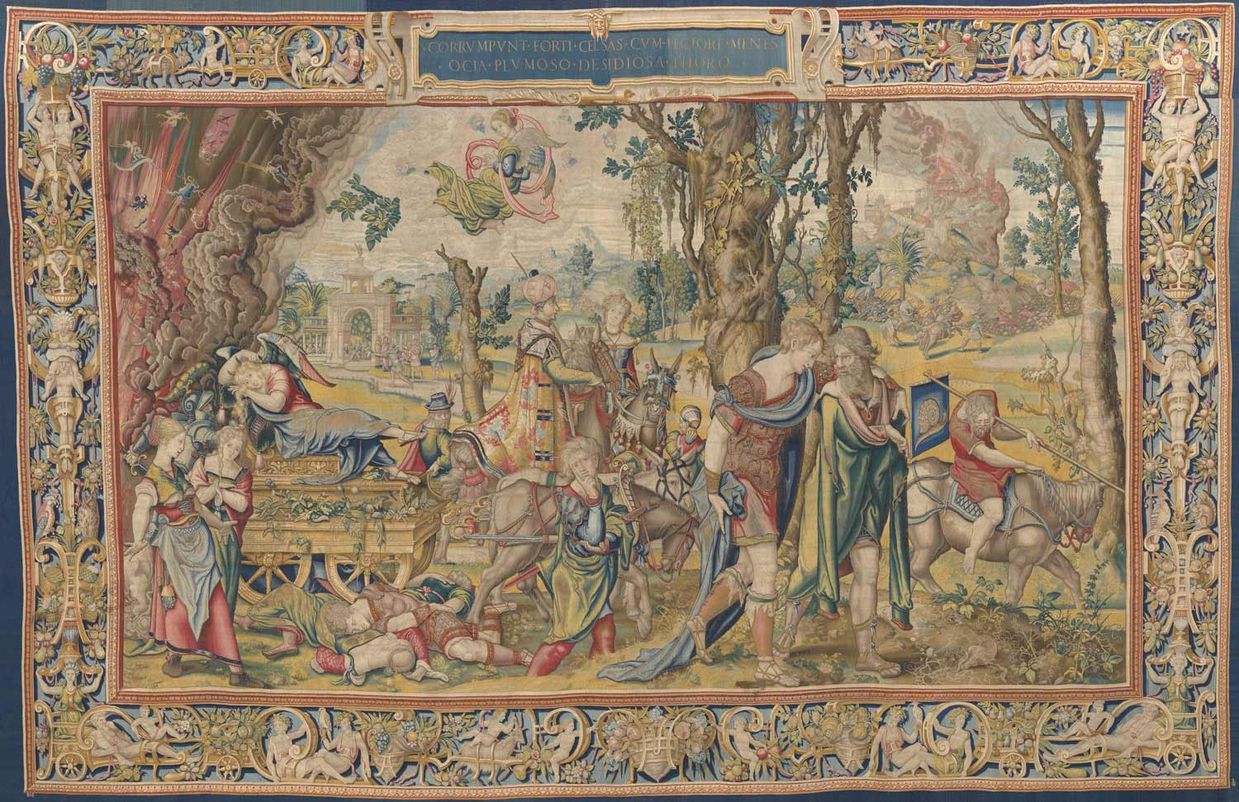
Sloth (Acedia)
Series title: The Seven Deadly Sins
Design: Pieter Coecke van Aelst (Aalst 1502–1550 Brussels), c.1533/34
Woven under the direction of Willem de Pannemaker (c.1510–1581), Brussels, c.1548/49
Wool, silk, precious-metal-wrapped threads
Kunsthistorisches Museum Vienna, Kunstkammer, inv. no. T XXXV/5
The personification of sloth is sitting on her chariot, which is drawn by two listless donkeys and already running over some of her victims.
The train is led by Somnus, sleep, whose flag is embellished with a snail.
learn more
The two monumental figures of an older and a younger man in the foreground of the picture may be Alexander the Great and his teacher Aristotle, who saved the young Macedonian prince from a life of idleness and abandon.
Fascinating Raphael
Translation of his Frescoes into Tapestries
The fact that Raphael’s works elicited fascination for centuries is demonstrated by the circumstance that full-scale copies of his frescoes in the Vatican Palace were made in the 17th century.

The School of Athens
Series title: Tapestries after Frescoes by Raphael in the Vatican
Design: Raffaello Sanzio da Urbino (Urbino 1483–1520 Rome), 1509/11
Woven under the direction of Pierre-François Cozette (1714–1801) and Michel Audran (1701–1771) in the Manufacture Royale des Gobelins, Paris, 1765–1771
Wool, silk
Kunsthistorisches Museum Vienna, Kunstkammer, inv. no. T XIII/2
These copies were intended to serve tapestry production. Raphael’s popular fresco The School of Athens from the Stanza della Segnatura served as a model for this tapestry. The complex pictorial scheme is dedicated to the philosophical spirit of ancient Greece as well as the artes liberales, the seven liberal arts. The philosopher Plato and the universal scholar Aristotle are standing at centre, while the Greek philosopher Epicure is writing in a book at the front left margin of the image, crowned with a Bacchus wreath.
Program
Art Education
For more information check out our German-language programme.
English guided tours
Dates:
19 November
3 / 17 December
7 / 14 January
Time:
3 p.m.
Meeting point: Entrance Hall Kunsthistorisches Museum Vienna
Duration: c. 60 min.
Cost: €6
Limited number of participants
Would you like to book your own private tour?
For information: T +43 1 525 24 – 5202,
(Mon–Fri, 9 a.m.–12 p.m.) or kunstvermittlung@khm.at
Inclusive Art Education
Learn more about the exhibition in International Sign.
For more information about our inclusive programs please contact us: julia.haeussler@khm.at or +43 1 525 24 – 5207.
Exhibition ended

